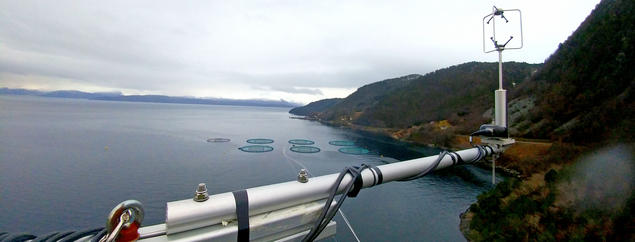Towards more reliable wind measurements

Within the framework of a recently started pilot project with Kjeller Vindteknikk, NORSAR has instrumented a 68-meter-high wind mast which is located at Nautneset at the north-west coast of Norway.
The purpose of these instrumental measurements is to identify the dynamic vibration characteristics of the mast carrying the wind speed sensors (anemometers) at various heights. The mast’s time‐dependent vibrations characteristics can then be used to correct the wind measurements.
The client is Kjeller Vindteknikk, who sets up and monitors the wind characteristics at various sites in Scandinavia. These masts often serve the purpose to identify the potential of wind energy parks or to identify the time-dependent wind loads for large infrastructures such as bridges.
More accurate results needed
In November, Dr. Abdelghani Meslem (NORSAR) and two colleagues from Kjeller Vindteknikk went to Nautneset (close to Molde) where Kjeller Vindteknikk is operating a 68-meter-high mast. Close to the anemometer located at 68 m height, the team installed an acceleration sensor of type Guralp FORTIS. Due to the mast’s direct location on the shore, the mast cannot be strutted with diagonal cables and is thereby highly susceptible to experience large displacements especially during high winds.
- These vibrations have significant impact on the recorded wind speeds, says Dr. Dominik Lang, Head of Department Earthquake Hazard and Risk.
Possibility for corrections
NORSAR will be monitoring the mast vibrations for the months to come and correlate the vibration data with data provided by the wind speed sensors.
- If our investigations can prove that the mast vibrations have a significant effect on the wind speed measurements, the wind speeds recorded at many other wind masts might need to be corrected for their mast vibrations as well, says Dr. Lang.
The project is funded by Statens Vegvesen.